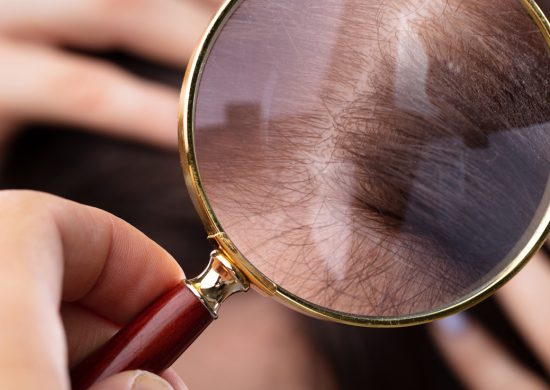Louse (plural: lice) is the common name for members of the order Phthiraptera, which contains nearly 5,000 species of wingless insect. Lice are obligate parasites, living externally on warm-blooded hosts which include every species of bird and mammal, except for monotremes, pangolins, and bats. Lice are vectors of diseases such as typhus.
Chewing lice live among the hairs or feathers of their host and feed on skin and debris, while sucking lice pierce the host’s skin and feed on blood and other secretions. They usually spend their whole life on a single host, cementing their eggs, called nits, to hairs or feathers. The eggs hatch into nymphs, which moult three times before becoming fully grown, a process that takes about four weeks.
Humans host two species of louse—the head louse and the body louse are subspecies of Pediculus humanus; the pubic louse, Pthirus pubis. The body louse has the smallest genome of any known insect; it has been used as a model organism and has been the subject of much research.
Lice were ubiquitous in human society until at least the Middle Ages. They appear in folktales, songs such as The Kilkenny Louse House, and novels such as James Joyce’s Finnegans Wake. They commonly feature in the psychiatric disorder delusional parasitosis. A louse was one of the early subjects of microscopy, appearing in Robert Hooke’s 1667 book, Micrographia.
Humans host three different kinds of lice: head lice, body lice, and pubic lice. Lice infestations can be controlled with lice combs, and medicated shampoos or washes.
Sucking lice are small wingless insects ranging from 0.5 to 5 mm (0.02 to 0.20 in) in length. They have narrow heads and oval, flattened bodies. They have no ocelli, and their compound eyes are reduced in size or absent. Their antennae are short with three to five segments, and their mouth parts, which are retractable into their head, are adapted for piercing and sucking. There is a cibarial pump at the start of the gut; it is powered by muscles attached to the inside of the cuticle of the head. The mouthparts consist of a proboscis which is toothed, and a set of stylets arranged in a cylinder inside the proboscis, containing a salivary canal (ventrally) and a food canal (dorsally). The thoracic segments are fused, the abdominal segments are separate, and there is a single large claw at the tip of each of the six legs.


